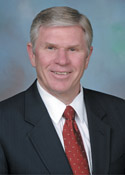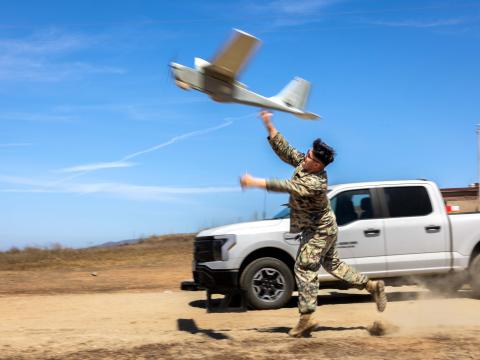Creating a New Mobile and Virtual Work Force
 |
More than five years ago, Netscape browser inventor and entrepreneur Marc Andreessen told me about the amazing capabilities the world soon would have via their cell phones or other mobile, handheld devices. Marc’s list seemed almost unimaginable but, lo and behold, it’s all available to us today in our hands just as he predicted—phone, e-mail, global positioning system (GPS) locator, Internet browser, instant messaging, endless music selections, television, direct satellite connectivity, and secure voice and data, for example. What an incredible, exponential growth in mobile, handheld technology that’s available to everyone—and, some developers today are asking, “What else can we build for you?”
At the Defense Information Systems Agency (DISA) in late 2000, we also started asking ourselves about initiatives we could take to enable our office employees to work from home—a slightly different twist on mobility that we referred to as telework. We were looking for new approaches for improving productivity, saving employee travel time, reducing big-city traffic congestion and pollution, and improving employee morale.
Our experiment was tackled by Jack Penkoske, the DISA human resources leader, who began studying applicable job positions, trial work periods, processes to use and metrics for measuring results. The first test for management was to learn new levels of trust in our work force. We asked ourselves questions such as, “Can we trust people to give us a full day of productive work if we allow them to work at home?” “How can we trust but verify?” “How can we measure productivity?”
Fortunately, our early experiment developed over time, and DISA now has an award-winning telework program. Today, DISA employees are working from home and also are “forward-deployed” as an advanced echelon to their new headquarters location at
Increasingly, DISA is viewing it as a recruitment and retention tool. In many cases, it is more important than pay. More and more, telework is becoming a negotiating chip between organizations and employees. Indeed, the mobile and virtual work force is becoming increasingly pervasive and meaningful in our daily lives.
Another fascinating series of developments began in the mid-1980s with “freeze-frame” projections, video teleconferencing (VTC) and, now, telepresence. Only about five years ago, the annual DISA customer conference experimented with combined voice and video over Internet protocol (IP) by having John Chambers, Cisco’s chief executive officer, provide a keynote luncheon address via VTC from
The new mobile and virtual work force also has been receiving a big push on Capitol Hill. Public Laws such as 108-199 and 108-447 have been targeting departments and agencies with such measures as designating “telework coordinators” and establishing policies for eligible employees to participate in telecommuting to the maximum extent possible. The new Telework Improvement Act of 2007 (HR 4106), which would force agencies to focus on their telework programs and expand them as well as establish governmentwide rules for federal telecommuting, is working its way to the House floor. This legislation, introduced last November, would require agencies to allow authorized employees to telework at least 20 percent of the time during a two-week period. It also requires all agencies to establish written telework policies and to punish those who fail to adhere. Sen. Joseph Lieberman (ID-CT) believes this legislation will help agencies overcome some of the longtime institutional inertia against telework.
The new mobile and virtual work force is improving mission performance and daily business operations in incredible ways. However, this new freedom, productivity and cost-saving effectiveness have piled a new set of challenges on the desk of chief information officers (CIOs). In addition to their previous responsibilities, CIOs now must handle new operational requirements; new, highly pilfered equipment inventories; new governance rules; and new network security controls.
The full set of operational capabilities required for a fully mobile and virtual work force that once seemed unimaginable is unfolding daily before us, and so is a new set of accompanying challenges. We’re closer to the day of a totally ubiquitous mobile and virtual work force than we might think. Beam me up, Scotty.
Lt. Gen. Harry D. Raduege Jr., USAF (Ret.), is chairman of the




Comments